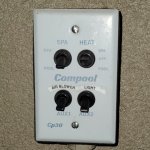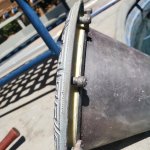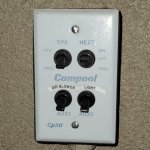- Jul 21, 2013
- 54,775
- Pool Size
- 35000
- Surface
- Plaster
- Chlorine
- Salt Water Generator
- SWG Type
- Pentair Intellichlor IC-60
This the voltmeter I have - what do I set it to (if it's acceptable) and where do I touch the other lead to?
I am concerned about your safety working around live voltages. That is why I would prefer you to use a non-contact voltage tester to confirm what wires are hot and then confirm power is truly off from all wires in the Compool panel before you touch any wires.
Presume when testing what's labeled AUX1 in purple, I place the red or black lead from the meter on the screw head marked in purple, but where does the other lead go? This is with the Blower and 240 Pool CB on, but Lite off. Repeat same for Lite and AUX2 with Blower CB off. If I then get power readings for each, it means they're labeled correctly in the annotated pic?
There is always the risk that an electrician has swapped the LINE and LOAD wires. Thus we cannot assume that the LINE wire is hot and the LOAD wire is not hot if the relay is off.
Electrical safety requires that everything be physically confirmed and there have been too many things around your pool electrical system that were not as you thought they were.
And then unscrew the one purple marked screw, cap it off, and then... it's done?
If that is physically confirmed to be the correct wire.
Also pictured is the putty and silicone product just bought to do this,
To do what?
You should use a wire nut to put on exposed wire ends once they are removed from the screw.
Lastly, the pool and spa, sundown, this week.
Nice pool.




